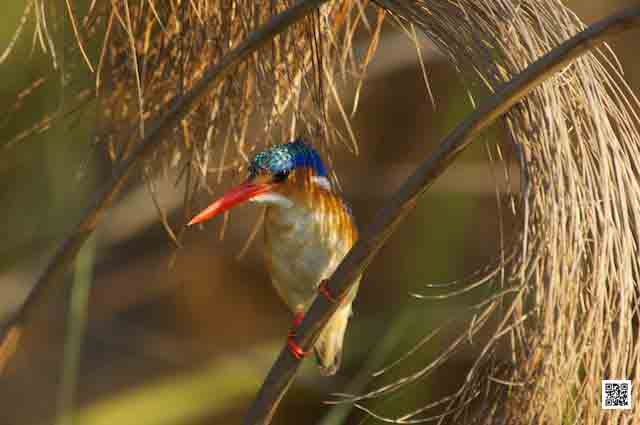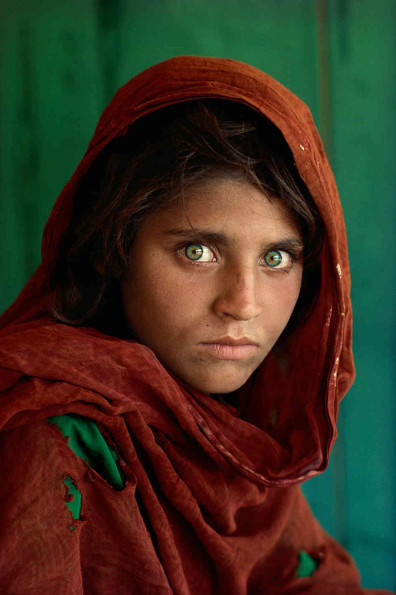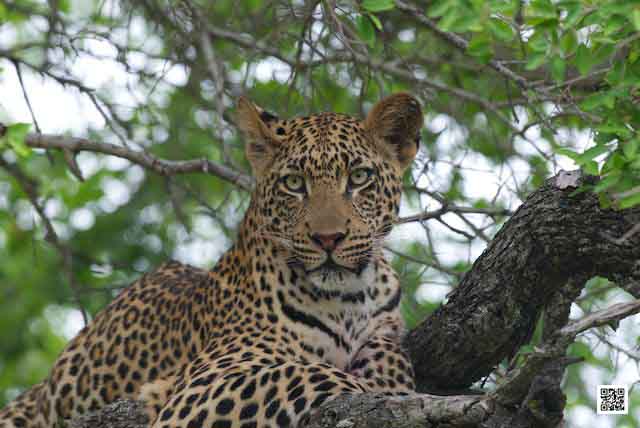21 April 2013
On Photo Safari: Mind the Weather
27/04/13 11:18 Filed in: Photographic Safari Tips

The best photographic safari experiences are game drives on open 4x4 jeeps. They give the ultimate feeling of the surroundings and for wildlife photography courses can’t be better moments than a leopard passing the vehicle just a few meters from you.
But you should mind the weather when using open vehicles. Be prepared, even if you expect sun. It can get very hot and if there is no roof, you will need a sunhat to avoid sunstroke. Expect changing conditions throughout the day. Dress in layers to respond to changing temperatures and have always a light rain/wind jacket to suit both, wind and rain.
When going on photographic safaris in South Africa, Botswana and Namibia be aware that it can be really cold in winter, at least in the morning and in the evening. You will need gloves and a warm hat while you are on the open vehicle exposed to the cold air.
During team building photo safaris at the Ngorongoro Crater we experienced often very surprised guests, because they didn’t think it can be that cold there. The Ngorongoro Crater rim is at an elevation of about 2,300 meters and in winter really challenging cold with the wind that comes with it, although the warm midday part makes one forget how it will be in the evening.
Be conscious of that when packing. The main rule is bringing something for all weather types and dress in layers. The essence of the weather is that it can change constantly during one day.
Enjoy the great experience an open vehicle offers and be prepared to feel comfortable throughout at all times.
Ute Sonnenberg for www.rohoyachui.com
Photographic Safari Destination Okavango Delta
26/04/13 18:32 Filed in: Photographic safari destinations

“The Okavango Delta (or Okavango Swamp), in Botswana, is a large inland delta, formed where the Okavango River reaches a tectonic trough in the central part of the endorheic basin of the Kalahari. All the water reaching the Delta is ultimately evaporated and transpired, and does not flow into any sea or ocean. Each year approximately 11 cubic kilometres of water spread over the 6,000-15,000 km² area.” (Wikipedia)
These are the dry facts of an amazing photographic safari destination with the most beautiful light one can wish for a wildlife photography course or just to watch and snap. The Okavango Delta’s best places cannot be reached by car, because they are surrounded by water for most of the time. The combination of water with bush gives the Okavango Delta a very own magic. One has game drives by 4x4 jeep and game drives by canoe or boat. Both open a very own beautiful world of nature with plenty of wildlife and especially birds.
There are also self-drive safaris possible, but they are limited to the accessible areas and these do vary during the year, depending on the water level. The best thing to do are fly in safaris. They provide access to all areas and one can move quickly between the camps. For team building photo safaris it is nice to include water activities that request team effort. Water game drives can be done with electrical powered eco-boats or mokoros, the local canoes.
The best time to visit is from June to November with regards to accessibility, but anytime of the year is great in the delta with beautiful light and great wildlife sightings.
Check it out!
Ute Sonnenberg for www.rohoyachui.com
How Businesses Benefit from Team Building Photo Safaris
25/04/13 09:58 Filed in: Team Building

What was your last team building? Most likely some kind of activity that provides fun and lets the team do something together like bowling or other sports activities. What were the benefits of the team building? Most likely you learned something about your colleague, learned to do things together with people you thought you don’t like that much, but they turned out to be nice. Did anything-significant change after the team building when you all were back in the office? Hopefully it did, that’s the purpose, but for how long did the benefits last?
Well, team building photo safaris are not the first thing your boss thinks of when you work in lets say New York and the bush is a very long flight and big travel costs away. Yet, it’s worth to consider doing one. Not only will the team members love the idea of going on safari, they will feel much rewarded and stimulated for greater goals. And there are more benefits.
A photographic safari environment in combination with wildlife photography works like a Silicon Valley incubator with regards to anything you want to achieve with the team. A few days on team building in the bush do more than weekly training sessions at the office for 6 months. Any process is accelerated by the environment and visualized through photography, ready to take home and to benefit from it forever.
And there need to be no worries about the photography part. Neither technical knowledge nor big camera equipment are needed. The team building has the structure of a wildlife photography course and photography tuition is provided when needed.
Interested? Think about it.
Ute Sonnenberg for www.rohoyachui.com
How Wildlife Photography can be Pulitzer Winning
24/04/13 16:17 Filed in: Wildlife Photography Courses | Photography & Art

Do you remember any wildlife photograph winning a Pulitzer Prize? I don’t. The Pulitzer Prizes honor excellence in journalism and the arts including photography, but photography as part of photojournalism. Images from photographic safaris or wildlife photography courses are not the ones that win the prize unless the safari becomes news or wildlife conservation is the subject. And the last is actually a very interesting thought to follow.
It will need more than a photographic safari to the Masai Mara to make a documentary about conservation. One needs to do already a lot of pre-production work to understand the topic, read a lot, talk to people in conservation and focus on one specific issue to deepen it out in a photo documentary. This will be the base for the photographic safari to capture the images and to tell the story of this specific problem or success.
Practicing this kind of wildlife photography documentaries in wildlife photography courses can be very nice, inspiring and may lead one day to a Pulitzer Prize. Even team building photo safaris can benefit from this approach, although there will most likely not the prize be the goal. Anyhow, never think never. Powerful wildlife photography telling a powerful story can have the potential to be Pulitzer Prize winning, although it will have to compete with what happens elsewhere in the world. It’s worth thinking about it and one can also start small, growing towards bigger prizes.
Happy snapping and growing!
Ute Sonnenberg for www.rohoyachui.com
How Steve McCurry's Photography can be Part of Wildlife Photography Courses
23/04/13 11:36 Filed in: Wildlife Photography Courses

Steve McCurry is well known and often awarded for his powerful documentary photography from conflict areas all over the world, like for example the famous photograph of an Afghan girl below.

McCurry has often said that he tries to immerse himself into the culture of the location he is visiting, and rather than immediately head out with his camera, he prefers to watch and wait, saying “If you wait, people will forget your camera and the soul will drift up into view.” (via Phoblographer)
And this is exactly what makes the difference in photography, also in wildlife photography, wait and watch. On photographic safaris, during team building photo safaris and during wildlife photography courses in the Masai Mara, Serengeti, Kruger National Park, the Okavango Delta and elsewhere, this very same principle applies. When we are out on a wildlife photography course the probably most important lesson is to practice patience and not try to force anything. There are people who call the animals from the vehicle or make noises or some even google lion roaring on their iPad to play it at the lion sighting to make the lion do something. They found it to boring just sitting and waiting. By doing any of these, the animals will not show their soul, they will not trust and do their natural thing and the photographer will not get the powerful images he/she is wanting. Only when spending time with the animals they begin to relax and do their normal thing, trust is built and by just being with them the greatest photographic opportunities emerge. The wildlife photographer got to tune into the environment, just like Steve McCurry does on other locations and wait, giving the animals the space to be and show how beautiful they are.
Try it at home with cats and dogs. They will appreciate it and you will get great pictures.
Ute Sonnenberg for www.rohoyachui.com
How Wildlife Photographers can Learn from William Eggleston
22/04/13 10:43 Filed in: Photography & Art | Photographic Safari Tips

“I was in Oxford, Mississippi for a few days and I was driving out to Holly Springs on a back road, stopping here and there. It was the time of year when the landscape wasn't yet green. I left the car and walked into the dead leaves off the road. It was one of those occasions when there was no picture there. It seemed like nothing, but of course there was something for someone out there. I started forcing myself to take pictures of the earth, where it had been eroded thirty or forty feet from the road. There were a few weeds. I began to realize that soon I was taking some pretty good pictures, so I went further into the woods and up a little hill, and got well into an entire roll of film.” (from a conversation of William Eggleston with Mark Holborn, afterward from The Democratic Forest)
This might sound familiar for wildlife photographers, being on a photographic safari or wildlife photography course lets say in the Masai Mara in Kenya, driving the entire morning over the Great Plains and seeing “nothing”. As Eggleston’s story tells, there is always something to photograph, one only needs to start seeing. And well, we are probably sometimes a bit spoilt, expecting the perfect light on incredible wildlife interaction right in front of us and yes, that happens, but there is so much more to see and photograph by just starting seeing. There is landscape, there are beetles, leaves, flowers, grass, soil, rocks, roads and so much more and not only in the bush, start looking out for it in your own garden and hometown. Do not wait for the obvious great shot, start seeing the great photograph in everything and a whole new world will open to a new dimension in photography. Sounds a bit vague? Try it and see the results. During our team building photo safaris we often experience the most amazing surprises when people who never thought of themselves of being able to express something in photos come up with the most beautiful results and they also might have thought at one stage, that this all sounds a bit vague.
Go and try and be surprised by your photography.
Ute Sonnenberg for www.rohoyachui.com
ePhoto Book: Sense Essence
21/04/13 16:46 Filed in: Photography & Art

This ephoto book tells the story of a photographic safari to the Great Migration in the Masai Mara. The day we saw the crossing was a day of drama, you could feel it; it was in the air. The herds were nervous, zebra families calling for each other from both sides of the Mara River. It was a perfect day for a wildlife photography course, demanding for the photographer, yet rewarding at the end.
Enjoy the essence of this day. Click here to view and download.
Ute Sonnenberg for www.rohoyachui.com